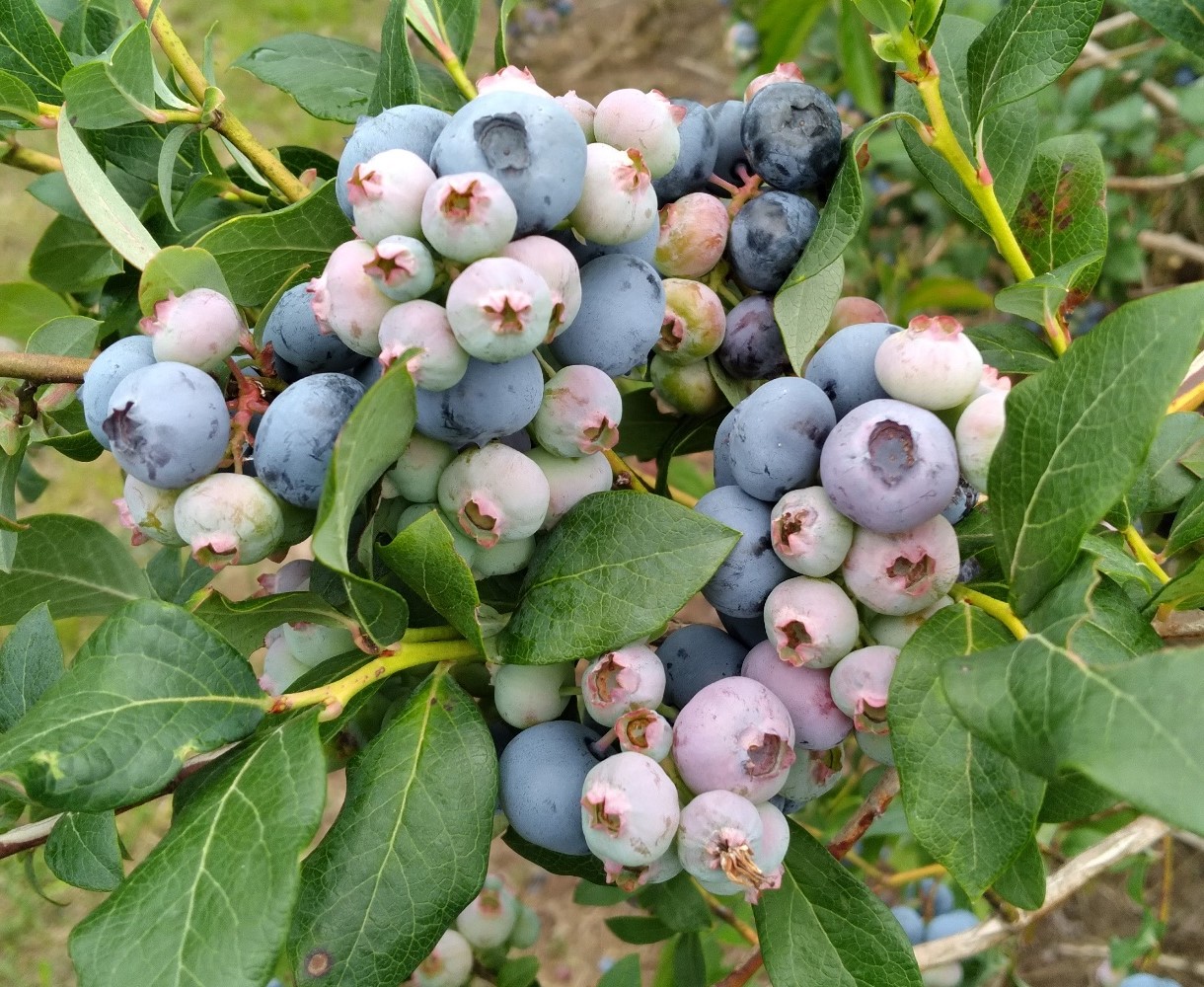West central Michigan small fruit update - June 21, 2022
The heatwave affecting west Michigan is causing sunscald and bronzing in berries, especially in summer strawberries.

Current weather conditions in west Michigan are characterized by temperatures reaching the upper 90s with relative humidity below 50%. As of June 21, average daily minimum and maximum temperatures are 61 and 85 degrees Fahrenheit. Prevailing weather conditions create a high demand of water by all fruit crops that need to compensate for the water lost via evapotranspiration. Under the current weather conditions, plant water demand is greater than the amount of water plants can uptake from the ground. So far, the most affected crops seem to be strawberries that are in the middle of the harvest and early blueberry varieties. Affected fruits show symptoms of bronzing, sunscald and green fruit abortion (Photo 1). Growers need to provide supplemental irrigation to prevent considerable fruit loses and yield.
Strawberries are in the middle of the harvest with excellent fruit and yield. However, the heatwave affecting the region is already affecting the last portion of the fruit crop; fruits are smaller and yields start declining. Growers are not reporting significant problems except for some fields with strawberry black root rot problems. Those fields are suffering more the heatwave due to the damaged root system that is unable to keep up with the plant water demand.
Blueberries, on the other hand, are already approaching the harvest season. Fruit in early varieties like Bluetta and Duke are at 5% blue stage. Maintain proper irrigation to provide the much need water supply. That will ensure fruit quality and yield.

Regarding pest problems, cranberry fruitworm population dynamics have continued. However, this week the population of overwintering adult emerging from their overwintering sites will start declining. That has already been shown by the MSU Trevor Nichols Research Center monitoring program. At this time, cranberry fruitworm eggs are hatching, and we can observe eggs and newly hatched larvae in both sprayed and non-sprayed fields.
Spotted wing Drosophila (SWD) is already present in low number according to reports form our monitoring network. It is important to prepare your integrated pest management (IPM) program for managing this pest as soon as it shows in their field. Start deploying SWD traps in fields with fruit that will be harvested soon. See “Building and using traps for monitoring SWD in fruit plantings” by Rufus Isaacs for tips to construct your monitoring devises.
If you need assistance preparing your SWD IPM program, contact your local MSU Extension office or email Carlos Garcia at garcias4@msu.edu.



 Print
Print Email
Email
